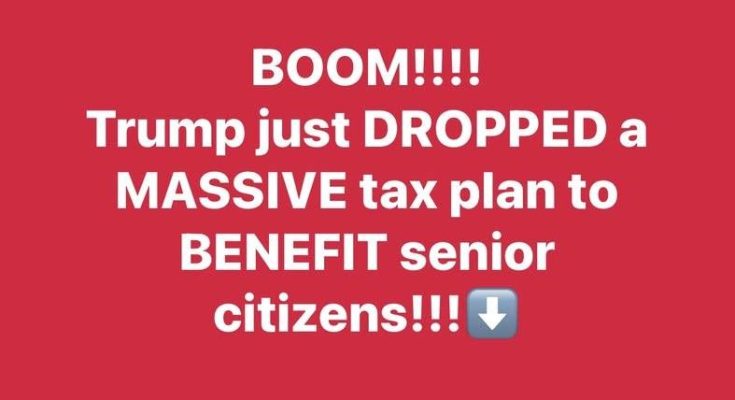In a significant economic initiative, White House Press Secretary Karoline Leavitt has formally introduced President Donald Trump’s new tax proposal, an ambitious strategy aimed at delivering substantial relief to middle-class Americans while addressing tax loopholes that favor the affluent. The proposal, which is already igniting intense discussions throughout Washington, centers on the removal of taxes on tips, Social Security benefits, and overtime pay, policies intended to increase the disposable income of everyday workers.
This announcement arises amidst escalating worries regarding inflation, economic uncertainty, and the ongoing repercussions of the pandemic, which have exerted considerable financial strain on American households. Trump’s team asserts that these tax modifications will directly benefit workers in service sectors, seniors on fixed incomes, and employees who work additional hours to make ends meet. Nevertheless, critics contend that while certain elements may appear advantageous to the middle class, the overall consequences of the tax reductions could predominantly favor corporations and wealthy individuals.
A Detailed Examination of the Key Provisions
Trump’s proposal encompasses several crucial tax policy changes aimed at enhancing economic growth, boosting employment, and ensuring long-term fiscal health. Some of the most significant provisions include:
- Abolishing Taxes on Tips, Social Security Benefits, and Overtime Pay
The proposal eliminates federal taxes on tips, which would greatly benefit restaurant workers, bartenders, hairdressers, and other service industry personnel who depend on gratuities for their earnings. Trump’s campaign has framed this as a transformative measure for blue-collar workers.
Social Security benefits would also be rendered completely tax-free, a decision that could provide substantial financial relief to millions of retirees who currently endure federal taxation on a portion of their Social Security income.
By abolishing taxes on overtime pay, the administration aims to motivate diligent Americans to take on additional hours without the concern of increased taxation.
- Closing the Carried Interest Loophole
A significant aspect of the proposal involves addressing the carried interest loophole, a longstanding tax regulation that permits hedge fund managers and private equity executives to pay lower tax rates on investment profits compared to ordinary income earners.
Trump had previously vowed to abolish this loophole during his 2016 campaign, yet it remained largely unchanged during his administration. This time, his team is advocating for a more assertive strategy to equalize the tax landscape. - Extending the 2017 Tax Cuts and Jobs Act
One of Trump’s cornerstone economic initiatives during his first term was the 2017 Tax Cuts and Jobs Act (TCJA), which reduced individual tax rates, lowered the corporate tax rate from 35% to 21%, and raised the standard deduction.
The new proposal aims to prolong these tax cuts beyond their initial expiration date in 2025, contending that eliminating these reductions would impose unnecessary burdens on American families and businesses.
Proponents assert that the TCJA spurred economic growth and that allowing the tax cuts to lapse would lead to a significant tax increase for millions of Americans. - Lowering the Corporate Tax Rate to 15%
Trump’s latest initiative pushes for an even greater reduction in corporate taxes, proposing a decrease from 21% to 15%. His administration believes this will promote business investment, foster job creation, and deter companies from moving abroad.
Nevertheless, critics contend that further lowering corporate taxes could disproportionately favor large corporations and exacerbate wealth inequality.
Supporters maintain that a reduced corporate tax rate will result in higher wages, improved benefits for employees, and more robust economic growth.
Economic Consequences: Who Benefits and Who Suffers?
The proposed tax changes have ignited a vigorous political and economic discussion, with advocates praising it as a benefit for diligent Americans and small enterprises, while detractors caution that it may exacerbate the federal deficit and widen the wealth disparity.
Possible Advantages
✅ Increased disposable income for workers – By removing taxes on gratuities, overtime earnings, and Social Security benefits, employees and retirees might experience a rise in their net income.
✅ Promoting business growth – Reducing corporate tax rates could foster economic development, draw in more investments, and generate additional employment opportunities.
✅ Addressing inequitable tax loopholes – The removal of carried interest loopholes would stop Wall Street leaders from enjoying lower tax rates than average workers.
✅ Maintaining tax relief for individuals and families – Extending the tax cuts from 2017 guarantees that Americans will not encounter an abrupt rise in personal income taxes.
Possible Disadvantages
❌ Increased national debt – Opponents contend that significant tax reductions without a definitive offset could expand the deficit, jeopardizing future generations.
❌ Corporate tax reductions may benefit the affluent – Some argue that lowering the corporate tax rate will result in greater profits for companies instead of improved wages for employees.
❌ Lack of a clear strategy for revenue replacement – Although the proposal seeks to reduce taxes, it fails to outline how the government will make up for the lost revenue, raising worries about potential reductions in Medicare, Social Security, and other federal programs.
The Political Struggle: Democrats vs. Republicans
As anticipated, Democrats have pledged to oppose the proposal, denouncing it as yet another handout to the affluent and a perilous fiscal decision that could exacerbate the deficit. House Minority Leader Hakeem Jeffries criticized the initiative, asserting:
“This is merely another effort to channel funds into the hands of billionaires while neglecting working families. Abolishing taxes on tips may sound appealing, but this entire proposal serves as a Trojan horse for corporate avarice.”
On the Republican front, although many conservatives commend Trump’s initiative, there remain divisions within the party. Some fiscal conservatives express concern regarding the absence of spending cuts to balance the tax reductions, while others endorse the vigorous effort to prolong the TCJA and decrease corporate taxes.
Senator Rand Paul, a longstanding proponent of tax reductions, conveyed cautious endorsement, stating:
“I appreciate the direction of this proposal, but we must be prudent about how we finance it. We cannot continue to reduce taxes without also cutting spending.”
In the meantime, Trump supporters such as Senator Josh Hawley are fully in favor of the proposal, contending:
“This is about ensuring that the American worker receives a fair deal. The Biden administration has implemented policies that adversely affect middle-class families, and President Trump is providing relief where it is most needed.”
What Lies Ahead?
The legislative confrontation over this tax proposal is poised to become one of the pivotal economic battles of Trump’s presidency. The plan must navigate through both chambers of Congress, where it will encounter rigorous examination, negotiations, and possible amendments.
Given a divided government, obtaining bipartisan support will prove difficult, particularly with the contentious 2026 midterm elections approaching. Legislators from both parties will likely leverage this tax proposal to galvanize their voter base, transforming it into a significant political flashpoint.
As Congress braces for a protracted and contentious discussion, Americans will be closely observing to determine whether Trump’s tax cuts fulfill their promises.



